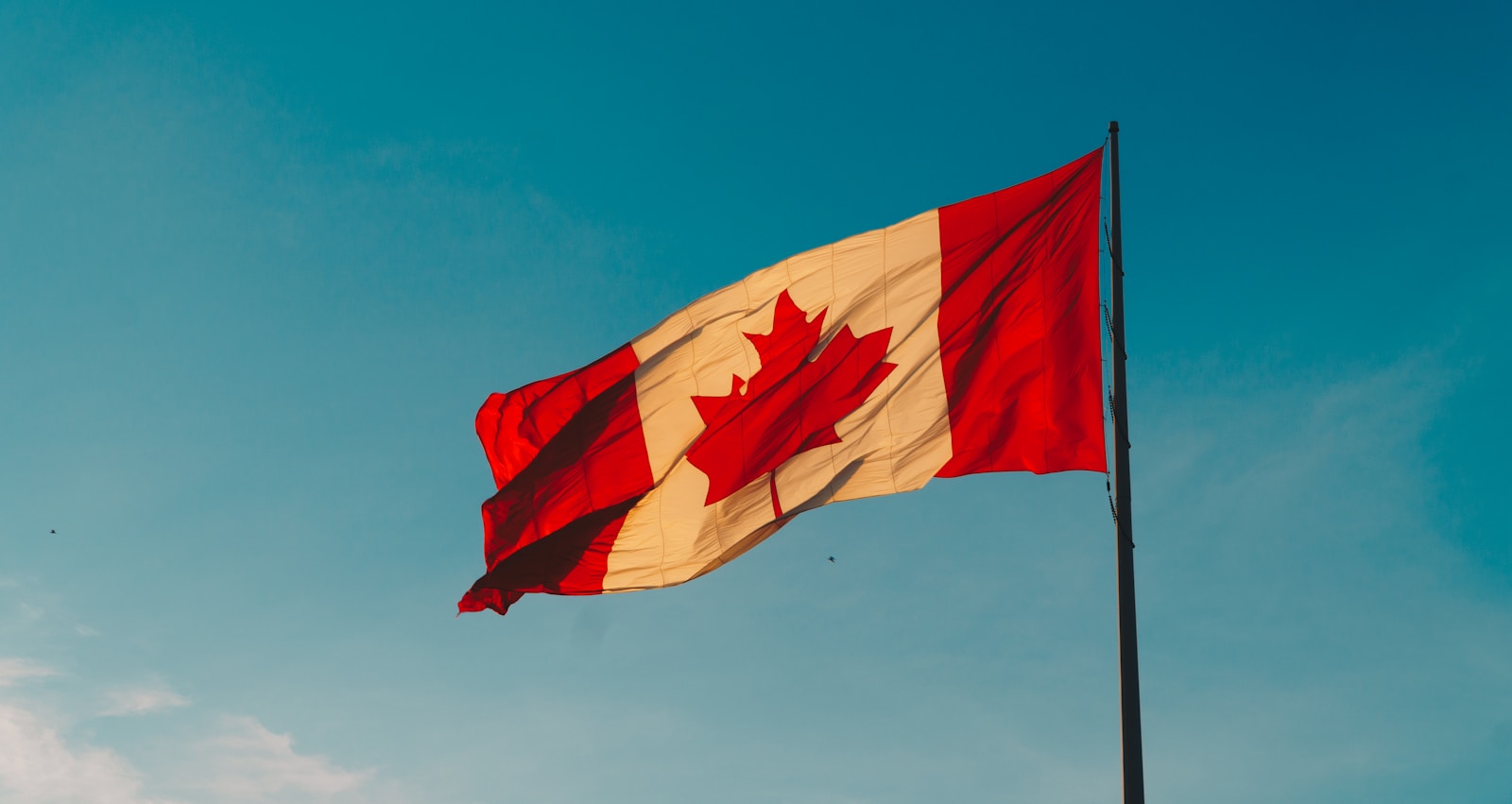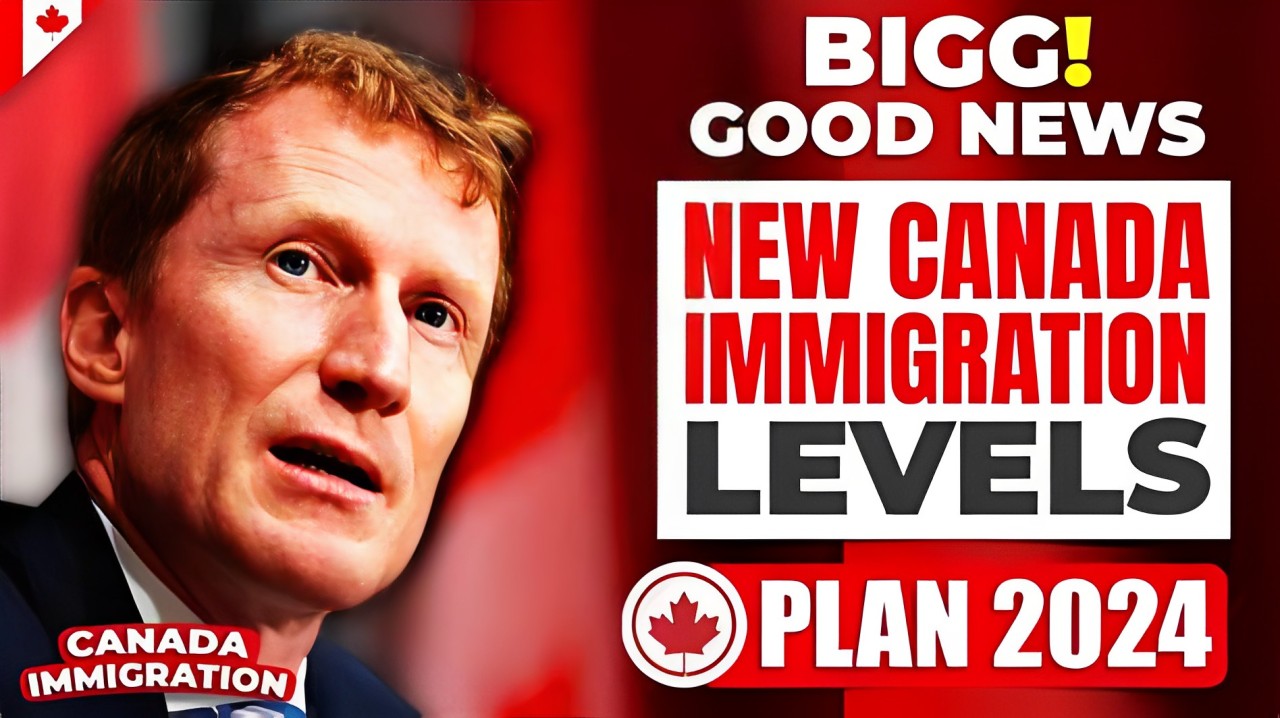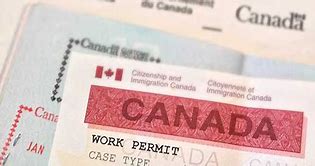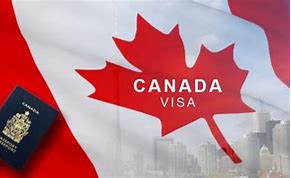By JP Tasker, CBC News On September 18, 2024, Federal Ministers Mark Miller, the Minister of Immigration, Refugees and Citizenship, and Randy Boissonnault, the Minister of Employment, made key announcements concerning Canada’s immigration system. The reforms, aimed at bolstering temporary resident programs and migration pathways, reflect the government’s commitment to adapting to current economic conditions and ensuring that Canada’s labor needs are met efficiently. STRENGTHENING CANADA’S WORKFORCE POST-PANDEMIC Minister Boissonnault began by reflecting on the early days of the COVID-19 pandemic, highlighting the government’s swift action to protect workers and stimulate the economy. “We accelerated hiring, supported small businesses, and welcomed temporary foreign workers to fill hundreds of thousands of job vacancies,” he said. This approach helped reduce the number of job vacancies from one million to 500,000, putting Canada in a strong economic position as it recovered from the pandemic. Today, as Canada boasts the strongest economy in the G7 and leads the world in foreign direct investment per capita, the government is focusing on ensuring that the measures introduced during the pandemic are adapted to current economic realities. TEMPORARY FOREIGN WORKER PROGRAM REFORMS Minister Boissonnault reiterated that the Temporary Foreign Worker (TFW) Program is intended as a last-resort solution for employers when no suitable Canadian workers are available. He emphasized that the program is not designed to replace Canadian workers or suppress their wages. To reinforce this, the Prime Minister recently announced changes to the program, set to take effect on September 26, 2024. One major change includes reducing the cap on the percentage of temporary foreign workers in a company from 20% to 10%. Additionally, in census metropolitan areas with an unemployment rate above 6%, applications for temporary foreign workers in the low-wage stream will be refused. Minister Boissonnault added that further changes would be announced regarding the high-wage stream within the next 60 days. Quebec’s simplified processing program, which previously had no cap, will also be subject to these new limitations. The maximum duration for low-wage work permits will be reduced from two years to one year, with exceptions for primary agricultural employers. The list of census metropolitan areas subject to the refusal-to-process measure will be updated quarterly based on the latest labor market data. Minister Boissonnault stressed that the TFW Program must remain flexible, adjusting to the economic conditions of the moment. “When we have a high number of vacancies, we can bring in more people,” he said, but as the economy tightens, the program will become more restrictive, prioritizing jobs for Canadians, students, and newcomers. UPDATES TO INTERNATIONAL STUDENT PROGRAM Minister Miller also provided updates on international student policies, underscoring three significant measures announced less than a year ago. These include a national cap on student permits, a redistribution of these permits across provinces, limitations on spousal permits, and efforts to combat fraud within the system. In light of these developments, the federal government continues to refine its immigration policies to ensure that they meet the needs of Canada’s evolving economy while providing opportunities for Canadians and newcomers alike. Key Takeaways 1- The Temporary Foreign Worker (TFW) Program remains a last-resort option for filling job vacancies when no Canadian workers are available. 2- A cap reduction from 20% to 10% on the percentage of temporary foreign workers that companies can hire is being implemented. 3- Unemployment above 6% in census metropolitan areas will result in a refusal to process temporary foreign worker applications in the low-wage stream. 4- The duration of work permits for low-wage temporary foreign workers will be reduced from two years to one year, except for agricultural employers. 5- Quebec’s simplified processing program will also be subject to the new cap limitations. 6- Updates to the International Student Program include capping student permits, redistributing them across provinces, limiting spousal permits, and tackling fraud. HOW WORLDBRIDGE IMMIGRATION CAN ASSIST At Worldbridge immigration, we are committed to helping both employers and potential immigrants adapt to these new changes. Here’s how we can support you In this evolving landscape, Worldbridge Immigration stands ready to help clients navigate the new system, ensuring they can meet their goals while complying with the latest regulations. By staying updated on policy changes, we continue to provide top-tier immigration services for employers, students, and workers alike. As Canada’s economy continues to recover from the challenges of recent years, the federal government’s efforts to adjust immigration policies reflect its commitment to supporting Canadian workers and businesses. By implementing these changes to the Temporary Foreign Worker and International Student programs, the government aims to strike a balance between economic growth and fair labor practices, ensuring that job opportunities are prioritized for Canadians while still welcoming talent from around the world. Worldbridge Immigration is poised to assist employers and immigrants in adapting to these changes, ensuring a smooth transition for all parties involved. Let Worldbridge Immigration Services be your guide to a successful future in Canada Contact us: Website: www.theworldbridge.ca Email: info@theworldbridge.ca Phone/WhatsApp: +1-416-727-7766 Social Media: @worldbridgeHQ
TRADE SCHOOLS IN CANADA: HIGH-PAYING JOB OPPORTUNITIES & FAST PR PATHWAYS AFTER GRADUATION
Canada offers a wealth of opportunities for individuals interested in skilled trades, providing both high-paying job prospects and fast-track pathways to Permanent Residency (PR). Skilled trades programs equip students with practical, hands-on experience through a combination of classroom instruction, internships, and apprenticeships, making them highly valuable in today’s job market. WHAT ARE SKILLED PROGRAMS? Skilled trade programs are educational pathways that prepare individuals for various hands-on careers in industries like construction, mechanical services, transportation, and more. These programs stand out for offering a mix of theoretical knowledge and extensive practical training, often through internships and apprenticeships. Students not only learn the essentials but also gain real-world experience, making them highly competitive in their fields. One of the main advantages of pursuing a skilled trade program in Canada is job security. The demand for skilled trades professionals is high across all provinces, ensuring ample employment opportunities upon graduation. Additionally, these programs often lead to industry-recognized certifications and licenses, which open up more specialized career options. Whether you’re a welder, electrician, mechanic, or even a chef, skilled trades can be a viable and rewarding career path. BENEFITS OF TRADE SCHOOLS FOR INTERNATIONAL STUDENTS For international students, trade programs offer a unique advantage. Canada prioritizes skilled trade professionals in its immigration pathways, and many provinces have fast-track PR options for those who graduate from such programs. Students also benefit from post-graduate work permits, allowing them to stay in the country and gain work experience, which is critical when applying for PR. If you’re considering a future in a skilled trade, it’s essential to know which schools in Canada offer the best programs. Below is a list of some of the top trade schools across the country that provide a wide range of skilled trade courses. TOP TRADE SCHOOLS IN CANADA 1. Northern Alberta Institute of Technology (NAIT) Location: Edmonton, Alberta NAIT offers a variety of apprenticeship and trade programs, with a strong emphasis on hands-on training. From electrical installation to welding, this institution provides in-demand courses that cater to the Alberta job market. 2. Southern Alberta Institute of Technology (SAIT) Location: Calgary, Alberta SAIT is renowned for its trade and apprenticeship programs. Students can explore fields such as automotive technology, construction trades, and more. The institution’s programs are designed to equip students with both the technical skills and practical experience necessary for success. 3. British Columbia Institute of Technology (BCIT) Location: Burnaby, British Columbia BCIT offers a range of skilled trade programs, including construction, mechanical services, and culinary arts. With multiple campuses, BCIT provides comprehensive training and apprenticeships, making it one of the top trade schools in the province. 4. Saskatchewan Polytechnic Location: Saskatchewan (multiple campuses) Offering programs in construction, mining, and industrial trades, Saskatchewan Polytechnic is an excellent choice for those looking to break into the skilled trades sector. Its focus on practical training ensures that students are job-ready upon graduation. 5. Red River College Polytechnic Location: Winnipeg, Manitoba Red River College offers extensive trade programs across various sectors, including industrial mechanics and electrical engineering. The college’s strong industry ties and apprenticeship opportunities make it a top destination for skilled trades students. 6. Ontario Colleges (ontariocolleges.ca) Location: Ontario (multiple colleges) Ontario is home to numerous colleges offering skilled trade programs. Institutions such as Conestoga College, George Brown College, Mohawk College, and Fanshawe College provide a wide range of courses in construction, automotive, culinary, and mechanical trades. These programs often include post-graduate work permits, allowing students to transition smoothly into the workforce. KEY SKILLED TRADE CATEGORIES Skilled trades in Canada can be categorized into four major sectors: PR PATHWAY FOR TRADE GRADUATES A major advantage of pursuing a trade program in Canada is the fast-track PR pathway available to graduates. Skilled trades professionals are in high demand across the country, and several provinces prioritize them in their immigration processes. By completing a skilled trade program, international students not only enhance their employability but also increase their chances of obtaining PR through provincial nominee programs (PNPs) or other immigration pathways. Conclusion For individuals seeking a rewarding career with high employment potential, trade schools in Canada offer a fantastic opportunity. These institutions provide hands-on, industry-relevant training in high-demand fields, ensuring that graduates have the skills and experience needed to succeed. Additionally, the fast-tracked PR pathways available to trade graduates make these programs particularly appealing to international students. If you’re ready to embark on a career in skilled trades, consider enrolling in one of the top trade schools mentioned above. With the right training, you’ll be well on your way to a prosperous future in Canada. If you would like more information on specific programs, application processes, or assistance with choosing the right trade school, feel free to reach out for personalized guidance. Let Worldbridge Immigration Services be your guide to a successful future in Canada Contact us: Website: www.theworldbridge.ca Email: info@theworldbridge.ca Phone/WhatsApp: +1-416-727-7766 Social Media: @worldbridgeHQ
Saskatchewan Unveils New PR Pathways for Healthcare and Agriculture Workers | Canada Immigration 2024
In a bold step to address labor shortages in critical sectors, Saskatchewan has introduced two new Permanent Residency (PR) pathways for healthcare and agriculture workers. These fast-track immigration programs aim to make the PR process quicker and smoother, benefiting both current workers and those looking to relocate to Saskatchewan. If you’re a healthcare professional or agriculture worker, this could be your opportunity to gain PR in Canada with fewer barriers. In this article, we’ll break down these new pathways, including eligibility requirements, key benefits, and why now is the perfect time to apply. Why Saskatchewan’s PR Pathways Are a Game-Changer Saskatchewan is taking proactive measures to fill labor gaps in essential industries. By creating tailored PR pathways for healthcare and agriculture workers, the province is making it easier for skilled professionals to transition from temporary work permits to permanent residency. These programs eliminate some of the typical hurdles associated with immigration applications, such as lengthy processing times and cumbersome paperwork. Both pathways are designed to prioritize qualified applicants and reduce bureaucratic delays, ensuring a smooth transition for those who meet the criteria. The Healthcare Talent Pathway: A Boost for Medical Professionals Healthcare workers, including nurses, healthcare aides, personal support workers, and technicians, now have a dedicated PR pathway to simplify their immigration journey. The Healthcare Talent Pathway focuses on making the process faster and more accessible for both locally and internationally trained professionals already working in Saskatchewan. Eligibility Requirements: 1. Work Experience: A minimum of six months (or 780 hours) of full-time work experience in a healthcare role in Saskatchewan. 2. Licensing: Applicants must meet the provincial licensing requirements for their profession (e.g., nurses must meet regulatory standards in Saskatchewan). 3. Education: Relevant educational credentials, such as diplomas or degrees that align with the healthcare position. This pathway is designed to benefit both those trained within Canada and foreign-trained workers, provided they meet the province’s licensing and credential requirements. The program also offers priority to those willing to work in rural areas, where healthcare shortages are more severe. The Agriculture Talent Pathway: A Simple Route to PR for Agricultural Workers Agriculture is the backbone of Saskatchewan’s economy, and labor shortages in this sector have created a need for skilled workers. The Agriculture Talent Pathway provides an excellent opportunity for agricultural workers with practical, hands-on experience to secure PR, even without formal education or degrees. Key Benefits: 1- No Formal Education Required: This pathway is open to workers who may not have formal degrees but possess extensive experience in agriculture-related roles. 2- No LMIA Required: The program waives the need for a Labor Market Impact Assessment (LMIA), significantly reducing paperwork and speeding up the process. Eligibility Criteria: 1. Work Experience: A minimum of six months or 780 hours of full-time work experience in an agricultural role in Saskatchewan. 2. Job Offer: A full-time, permanent job offer from a Saskatchewan employer in an eligible occupation. 3. Language Proficiency: A minimum Canadian Language Benchmark (CLB) level of 4 in either English or French. This pathway is particularly appealing to workers without formal education who have years of practical experience in the field. By removing the LMIA requirement and formal education barriers, Saskatchewan makes it easier for agricultural workers to transition from temporary to permanent residency. Act Now: Time-Sensitive Opportunities While these PR pathways offer a great opportunity, they are time-sensitive. Saskatchewan is actively working to fill labor shortages, and the program could change or close once those needs are met. If you meet the qualifications, now is the perfect time to apply and secure one of the easiest and fastest routes to PR in Saskatchewan. Saskatchewan’s new PR pathways for healthcare and agriculture workers represent a major shift in how Canada approaches immigration in these vital sectors. By offering streamlined processes, fewer bureaucratic challenges, and faster application times, these programs are an incredible opportunity for skilled workers. If you found this article helpful, don’t forget to subscribe to our newsletter for more updates on Canadian immigration opportunities. Stay informed and be the first to know about the latest PR pathways and other immigration news! Let Worldbridge Immigration Services be your guide to a successful future in Canada Contact us: Website: www.theworldbridge.ca Email: info@theworldbridge.ca Phone/WhatsApp: +1-416-727-7766 Social Media: @worldbridgeHQ
Canada’s Immigration Levels Plan 2024-2026: A Strategic Blueprint for the Nation’s Future
Canada’s Immigration Levels Plan for 2024-2026 is a forward-thinking strategy aimed at addressing labor market demands, fostering economic growth, and tackling demographic challenges. This plan will shape Canada’s future by leveraging immigration to create a sustainable economy and cohesive society. Overview of the Immigration Levels Plan 2024-2026 Each year, the Federal Department of Immigration, Refugees, and Citizenship Canada (IRCC) releases an Immigration Levels Plan to set targets for new immigrants. For 2024-2026, the goals are ambitious to meet the country’s evolving needs: – 2024: Target of 485,000 new permanent residents – 2025 and 2026: Target increases to 500,000 annually These targets aim to address labor shortages, sustain economic growth, and counteract Canada’s aging population. Why Immigration is Crucial for Canada Canada faces significant demographic challenges due to its aging population and low birth rates. Immigration is essential to: 1- Sustain the economy by addressing labor shortages. 2- Generate the tax revenue needed for healthcare and other services. 3- By 2030, 9 million baby boomers are expected to retire, placing more strain on the workforce. Canada’s immigration rate (1.2%) is three times higher per capita than the U.S. and has been increasing since the 1980s to address these demographic realities. The Role of Immigration in Economic Recovery Post-Pandemic The COVID-19 pandemic impacted Canada’s economy, leading to increased spending on social services. Immigration will: 1- Play a vital role in stabilizing the labor market. 2- Support economic growth as Canada recovers from the pandemic. 3- Offset declining natural population growth, contributing to the tax base and public services. Breakdown of Canada’s Immigration Programs The Immigration Levels Plan focuses on economic immigration, which accounts for over half of the projected admissions. Key programs include: 1- Federal Express Entry Programs: For skilled workers. 2- Federal Skilled Worker Program: For individuals with education, work experience, and language skills. Also Read- Top indemand programs for international students Ensuring employment and pathway to PR 3- Federal Skilled Trades Class: For qualified workers in trade areas. 4- Canadian Experience Class: For foreign workers or recent graduates from Canadian institutions. 5- Provincial Nominee Program (PNP): For provinces to nominate individuals based on labor market needs. Read More –Provincial Nominee Program 6- Atlantic Immigration Pilot Program: Targets skilled workers for Atlantic Canada. 7- Caregivers Program: Provides a pathway to permanent residence for caregivers. Read More-How to move to Canada as a caregiver 8- Federal Business Programs: Includes the Start-Up Visa Program for entrepreneurs and Self-Employed Persons Program for those with significant economic contributions. Other priorities include family reunification through programs like the Spousal and Common-Law Partner Sponsorship and the Parent and Grandparents Program, as well as refugee and humanitarian programs. Key Takeaways for Aspiring Immigrants 1. High Immigration Targets: Canada will increase its intake, with 500,000 immigrants annually by 2025 and 2026, to address labor shortages and sustain economic growth. 2. Demographic Challenges: Immigration is critical due to Canada’s aging population and low birth rate, making skilled foreign workers essential for economic sustainability. 3. Post-Pandemic Recovery: Immigration is key to stabilizing the economy post-COVID, helping to recover from increased social spending and labor shortages. 4. Diverse Immigration Programs: Canada offers many pathways, including: – Skilled Worker Programs (Express Entry, Federal Skilled Trades) – Provincial Nominee Programs – Family Reunification – Humanitarian and Refugee Programs 5. Economic and Social Integration: Canada’s plan aims to build a dynamic, inclusive society while ensuring the long-term health of the economy and public services. Conclusion Canada’s Immigration Levels Plan for 2024-2026 balances economic priorities with social integration. By welcoming more immigrants, Canada is positioning itself for long-term economic and demographic success while fostering a diverse and inclusive society. Immigration will remain a cornerstone of the nation’s strategy to meet the challenges of tomorrow. Also Read-Essential tips for preparing Canadian citizenship test Let Worldbridge Immigration Services be your guide to a successful future in Canada Contact us: Website: www.theworldbridge.ca Email: info@theworldbridge.ca Phone/WhatsApp: +1-416-727-7766 Social Media: @worldbridgeHQ
New Canada Work Permit Wage Requirements
Significant changes to Canada’s work permit regulations. These changes, particularly regarding wage requirements, are essential for both employers and foreign workers planning to work in Canada. Overview of the Changes The Canadian Minister of Employment and Social Development, Randy Boissonault, announced revisions to the Temporary Foreign Worker Program (TFWP) Workforce Solutions Roadmap. This update reflects current labor market conditions and long-term economic outlooks, ensuring that wage rates for temporary foreign workers remain fair and in line with market standards. As of January 2024, employers must review the wages of temporary foreign workers annually and ensure they reflect increases to prevailing wage rates for specific occupations and locations in Canada. This adjustment ensures that foreign workers are compensated fairly throughout their employment. The changes also extend certain temporary measures until August 30, 2024, which will be reassessed based on future labor market developments. Key Measures of the Temporary Foreign Worker Program 1. Sector-Specific Workforce Limits: Employers in sectors such as accommodation and food services, construction, and food manufacturing can hire up to 30% of their workforce in low-wage positions using temporary foreign workers. This provision will remain in place to help alleviate workforce shortages in these industries. 2. Maximum Tenure for Low-Wage Jobs: Workers earning less than the median hourly wage in their province or territory can be employed for a maximum of two years. 3. Labour Market Impact Assessment (LMIA) Validity: The maximum validity period for LMIA approvals has been reduced from 18 months to 12 months to reflect the latest job market conditions more accurately. This helps ensure that employers are hiring based on current labor needs. Increased Demand and Monitoring Canada’s Employment and Social Development Canada (ESDC) will closely monitor the TFWP to ensure it continues to meet the needs of both the economy and foreign workers. As of October 2023, the number of applications for temporary foreign workers increased by 40% compared to the previous year. This surge indicates a growing reliance on foreign labor to meet workforce demands. Streamlined Application Processing In April 2023, the TFWP introduced an online portal for submitting LMIAs. This shift to a digital platform has significantly enhanced the processing speed and made it easier for employers to meet their labor needs more efficiently. Additionally, the Recognized Employer Pilot (REP) has been launched to support employers who demonstrate a commitment to protecting workers’ rights. This pilot program reduces administrative requirements for repeat employers with a history of compliance, allowing them to focus on filling labor shortages. Understanding the Temporary Foreign Worker Program The TFWP allows employers to hire foreign workers when qualified Canadian citizens or permanent residents are unavailable for specific roles. Employers seeking to hire through this program must apply for an LMIA to prove that no local workers are available for the position. Work Permit Processing Times According to recent updates, 80% of work permit applications submitted online have been processed in an average of 134 days. However, this processing time may vary depending on factors such as the type of work permit and the location of the applicant. Stay Informed These new wage requirements and extended measures under the TFWP are critical for both employers and foreign workers. It’s essential to stay up-to-date with these developments if you’re planning to work or hire in Canada. For more information on how these changes might impact you or your business, feel free to reach out to us. We provide expert guidance on navigating Canada’s evolving immigration landscape and can help ensure compliance with these new regulations. Also Read- Upcoming changes to Canada post graduate work permit Let Worldbridge Immigration Services be your guide to a successful future in Canada Contact us: Website: www.theworldbridge.ca Email: info@theworldbridge.ca Phone/WhatsApp: +1-416-727-7766 Social Media: @worldbridgeHQ
Canada Clarifies Eligibility for Spousal Open Work Permit (SOWP) for International Students
In a recent announcement, Immigration, Refugees, and Citizenship Canada (IRCC) provided further clarifications regarding the restrictions on Spousal Open Work Permits (SOWP) for international students. These restrictions were first mentioned in January 2024 as part of measures to control immigration and reduce the number of international study permits. The newly issued guidelines clarify the eligibility criteria and the implementation timeline for these restrictions. Key Dates and Eligibility Criteria The restrictions will affect SOWP applications submitted on or after March 19, 2024. IRCC has outlined three categories for applicants, each with specific eligibility criteria. 1. Applications Submitted on or After March 19, 2024: – Graduate Programs: Applicants pursuing a master’s or PhD program will be eligible to bring their spouse to Canada under the SOWP. – Professional Programs: Spouses of applicants enrolled in certain professional programs, such as Doctor of Dental Surgery, Bachelor of Laws (LL.B.), Juris Doctor (J.D.), Doctor of Medicine (M.D.), Doctor of Optometry, Doctor of Pharmacy, Bachelor of Science in Nursing, Bachelor of Education, and Bachelor of Engineering, will also be eligible for the SOWP. – Applicants must provide a valid letter of acceptance from a Designated Learning Institution (DLI) and proof of enrollment. Proof of relationship, such as a marriage certificate, is also required. 2. Applications Submitted Before March 19, 2024: – Those who applied for a SOWP before the implementation date will still be eligible if the primary applicant has a valid study permit and is attending an institution eligible for a post-graduation work permit. This applies to students enrolled in public post-secondary institutions, colleges or universities, private colleges in Quebec, or Canadian private institutions that can legally award degrees under provincial law. 3. Extensions of Spousal Work Permits: – Applicants already in Canada who wish to extend their SOWP must meet the following conditions: they must have a valid study permit, be eligible for a post-graduation work permit, and be enrolled full-time in a qualifying educational institution. Alternatives for Non-Eligible Applicants For those who do not qualify for the SOWP, IRCC suggests other work permit options. For instance, spouses who secure a job offer from a Canadian employer may apply for a closed work permit. Additionally, individuals with advanced degrees from their home countries may explore postdoctoral opportunities in Canada, potentially allowing them to apply for a work permit under different criteria. Recommendations for Affected Applicants Given the new restrictions, applicants should consider alternative strategies to bring their families to Canada. One approach could be applying for a study permit for one spouse while the other applies for a visitor visa. Upon arrival, if the visitor visa holder secures a job offer, they may convert their status to a work permit holder, as per Canadian regulations. Applicants are encouraged to assess their situations carefully and explore the best options available. For those uncertain about their eligibility or the application process, seeking professional guidance may be beneficial. IRCC’s recent update is a reminder of the evolving nature of immigration policies and the importance of staying informed to make the best decisions for one’s future in Canada. Let Worldbridge Immigration Services be your guide to a successful future in Canada Contact us: Website: www.theworldbridge.ca Email: info@theworldbridge.ca Phone/WhatsApp: +1-416-727-7766 Social Media: @worldbridgeHQ
Canada Ends Policy Allowing Visitors to Apply for Work Permits from Within the Country
Ottawa, August 28, 2024 — Immigration, Refugees, and Citizenship Canada (IRCC) has announced the immediate termination of a temporary public policy that permitted visitors to apply for work permits from within Canada. This policy, initially introduced in August 2020, was a response to the travel restrictions imposed due to the COVID-19 pandemic. Under the now-defunct policy, visitors in Canada were able to apply for work permits without needing to exit the country. Additionally, foreign nationals who had previously held a work permit within the last 12 months but had changed their status to “visitor” were allowed to work legally in Canada while awaiting a decision on their new work permit applications. Although the policy was originally scheduled to expire on February 28, 2025, IRCC has opted to conclude it earlier as part of broader efforts to recalibrate the number of temporary residents in Canada and maintain the integrity of the immigration system. IRCC cited concerns that some individuals were exploiting the policy, misleading foreign nationals into working in Canada without proper authorization. Despite the policy’s abrupt termination, IRCC will continue processing applications submitted before August 28, 2024, under the previous guidelines. This change marks a significant shift in Canada’s immigration policies, signaling a return to pre-pandemic procedures and stricter control over temporary resident status within the country. With this announcement, many visitors in Canada who had hoped to transition to work permits may find themselves uncertain about their next steps. The abrupt end to this policy could significantly impact your plans, whether you were already in the process of applying for a work permit or were considering doing so in the near future. Understanding the complexities of Canadian immigration laws and finding the right path forward can be challenging, especially with such sudden changes. At Worldbridge Immigration Services, we are here to help you navigate this new landscape. Whether you need to explore alternative immigration options, understand how this policy change affects your current status, or determine the best course of action for your situation, our experienced consultants are ready to assist you. We can guide you through the process, ensuring that you are well-informed and positioned to make the best decisions for your future in Canada. Also Read- An overview of some immigration programs available in canada Reach out to us today to discuss your options and let us help you find the right path forward. Our team is committed to providing personalized advice and support tailored to your unique circumstances. Let Worldbridge Immigration Services be your guide to a successful future in Canada. Contact us: Website: www.theworldbridge.ca Email: info@theworldbridge.ca Phone/WhatsApp: +1-416-727-7766 Social Media: @worldbridgeHQ
Thousands of International Students in Canada Face Deportation, Protests Erupt Nationwide
Canada is currently witnessing a wave of nationwide protests as more than 70,000 international student graduates find themselves at risk of deportation due to recent changes in federal immigration policies. These students, who arrived in Canada with the hope of building a new life, now face an uncertain future. The Now Jawan Support Network, a prominent student advocacy group, has raised concerns that these graduates could be deported when their work permits expire at the end of this year. This crisis was triggered by a series of policy changes announced by the Canadian government, which have significantly altered the immigration landscape for international students. Key Policy Changes: 1. Limitations on Post-Graduation Work Permits (PGWP): The government has introduced restrictions on the duration and eligibility of Post-Graduation Work Permits, which many international students rely on to gain Canadian work experience after completing their studies. This experience is often crucial for those seeking permanent residency. The new rules limit the ability of graduates to extend their work permits, leaving many with no option but to leave the country when their permits expire. 2. Tighter Study Permit Regulations: The Canadian government has also implemented stricter criteria for obtaining and renewing study permits. This includes higher financial thresholds and more stringent documentation requirements, making it harder for students to maintain their legal status while studying in Canada. The policy also reduces the number of eligible institutions for study permits, further narrowing the opportunities for international students. 3. Reduction in Immigration Quotas: Another significant change is the reduction in the number of permanent residency spots allocated to international graduates. The government has scaled back the immigration quotas under programs like the Express Entry system, making it more competitive and difficult for students to transition from temporary status to permanent residents. 4. Increased Processing Delays: The changes have also led to longer processing times for visa and residency applications, adding to the uncertainty and stress faced by international students. Many graduates are now caught in a backlog, with their work permits expiring before they can secure permanent residency. The consequences of these policy changes are severe. Tens of thousands of students who had planned to apply for permanent residency after completing their studies are now burdened with heavy loans and the prospect of having to leave Canada. Many had invested not only financially but also emotionally in their future in Canada, and now they face the possibility of having to abandon their dreams. In response to this crisis, students, their families, and supporters have taken to the streets in protest, demanding that the Canadian government take immediate action to address the situation. The protesters are calling for a reconsideration of the policy changes, as well as for more support and pathways to permanent residency for international graduates. As the protests continue to grow, the pressure is mounting on Canadian authorities to find a solution that will allow these students to remain in the country and pursue their dreams. The situation has highlighted the challenges faced by international students in Canada and the need for a more comprehensive and fair approach to immigration policies. What do you think about these policy changes and the protests? Share your thoughts in the comments! Your opinion matters and can help shape the future of these students Let Worldbridge Immigration Services be your guide to a successful future in Canada Contact us: Website: www.theworldbridge.ca Email: info@theworldbridge.ca Phone/WhatsApp: +1-416-727-7766 Social Media: @worldbridgeHQ
Essential Documents for Canada Study Permit Application and Proof of Funds
When applying for a Canadian study permit, having the right documents is crucial. Here is a comprehensive list of the essential documents required for the application and tips on how to organize them effectively: 1. Letter of Acceptance You must provide a letter of acceptance from a recognized Canadian educational institution. This letter should confirm your admission into a program such as a master’s, PhD, diploma, or bachelor’s degree. If your program includes a co-op or internship component, ensure the letter indicates this, as it may affect your work permit eligibility. 2. Proof of Identity Submit a valid international passport with at least six months remaining before expiry. If your passport is close to expiring, consider renewing it to avoid complications with your study permit’s validity. 3. Digital Photograph Provide a recent digital photograph with a plain white background. Ensure the photo meets the specifications set by the Canadian immigration authorities. 4. Upfront Medical Examination (Optional) While not mandatory, completing an upfront medical examination can expedite your application process. If requested later, you may need to provide additional medical documents. 5. Police Report (Optional) A police report is no longer a compulsory requirement. However, if easily obtainable, it can be included to support your application. Also Read-Understanding the validity of police clearance certificate 6. Proof of Financial Support This is a critical part of your application. The following documents may be required: – If Self-Sponsoring: – Recent bank statements (4-6 months) – Employment letter and pay slips – Identification card – If Sponsored by a Business: – Personal and business bank statements – Business registration documents – Proof of business ownership and income (e.g., invoices, receipts, contracts) – If Sponsored by a Family Member: – Proof of relationship (e.g., birth certificates) – Sponsorship letter detailing the amount of financial support – Sponsor’s identification and proof of their financial capacity Also Read-Tips on how to show proof of funds 7. Letter of Explanation This document should outline your personal background, educational history, reasons for choosing Canada and your specific institution, and your post-graduation plans. It should also address any gaps or limitations in your application and detail your financial situation and ties to your home country. 8. Forms Depending on the application process (new or old portal), you may need to complete and submit various forms: – IMM 1294 (Application for Study Permit) – IMM 5257 (Application for Temporary Resident Visa) – Additional forms as required by the application portal. 9. Educational Credentials and Certificates Include copies of your educational qualifications and certificates. If married or with children, provide marriage certificates and birth certificates. 10. Supporting Documents for Children (if applicable) For accompanying children, include their birth certificates, passports, and photographs. If the child is above five years old, include a letter of exemption stating that a separate study permit is not required for them. Document Organization Tips 1. Form Preparation: Download and complete forms directly from the application portal to ensure they are up-to-date. 2. Document Arrangement:Arrange documents in a logical order that tells a coherent story. Start with important documents such as the letter of acceptance and proof of funds, followed by supporting documents and explanations. 3. Financial Proof:Organize financial documents to clearly show the source and amount of funds. Avoid inconsistencies and lump sums that might appear suspicious. 4. Client Information: Include non-financial documents such as educational credentials, personal identification, and supporting letters in a separate section. By ensuring all required documents are properly organized and accurately presented, you enhance your chances of a successful study permit application. If you need personalized guidance or have specific questions, consider consulting with an expert or mentor who can provide tailored advice based on your situation. Let Worldbridge Immigration Services be your guide to a successful future in Canada Contact us: Website: www.theworldbridge.ca Email: info@theworldbridge.ca Phone/WhatsApp: +1-416-727-7766 Social Media: @worldbridgeHQ
Understanding the Validity of Police Clearance Certificates for Canadian Immigration
When applying for permanent residence in Canada, it’s crucial to understand the validity of your police clearance certificate (PCC), particularly if you’re applying through processes like Express Entry. This article clarifies when a police clearance certificate is considered valid and when you might need to obtain a new one. Validity of Police Clearance Certificates For Canadian immigration purposes, a police clearance certificate is generally valid for six months from the date it is issued. If you are applying for permanent residence and your police clearance certificate is older than six months at the time you receive your invitation to apply, you will need to obtain a new certificate before submitting your application. When a New Police Clearance Certificate Is Required 1. Current Residence: If you currently reside in a country and your police clearance certificate for that country is more than six months old, you must obtain a new certificate. This is because immigration authorities require up-to-date clearance to assess your criminal background accurately. 2. Previous Residence: If you are applying from a country where you previously lived but are no longer residing, the validity of the police clearance certificate depends on the timing of its issuance. If the certificate was obtained after you left the country and you have not returned, it remains valid. The rationale is that if you have not been back in the country, there is no likelihood of committing a new offense there. Additional Considerations 1- Police Clearance from Multiple Countries: You need to provide a police clearance certificate from any country where you have lived for six months or more continuously during the past ten years, after turning 18. Immigration authorities may request certificates from even earlier periods or additional countries if they deem it necessary. 2- Certificates Issued Before Leaving: If you obtained a police clearance certificate just before leaving a country, and you spent even a day in that country after the certificate was issued, it is advisable to get a new one. This ensures that the clearance accurately reflects your criminal background status up to the date of application. 3- Expiry of Certificates: Some countries’ police clearance certificates have their own expiry dates, but Canadian immigration typically focuses on the six-month validity period. Ensure you are aware of and comply with the specific requirements for each country involved. To summarize, always check the validity of your police clearance certificates when applying for Canadian permanent residence. If your certificate is older than six months, or if there are any changes in your residence status, obtaining a new certificate might be necessary. By adhering to these guidelines, you ensure a smoother immigration process and avoid potential delays in your application. Also Read-Navigating the canadian immigration process top mistakes to avoid Let Worldbridge Immigration Services be your guide to a successful future in Canada Contact us: Website: www.theworldbridge.ca Email: info@theworldbridge.ca Phone/WhatsApp: +1-416-727-7766 Social Media: @worldbridgeHQ










